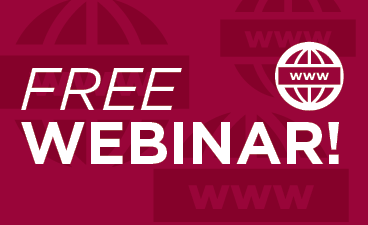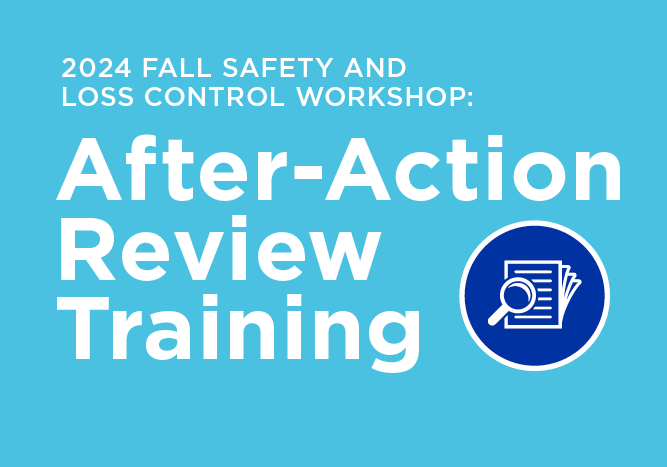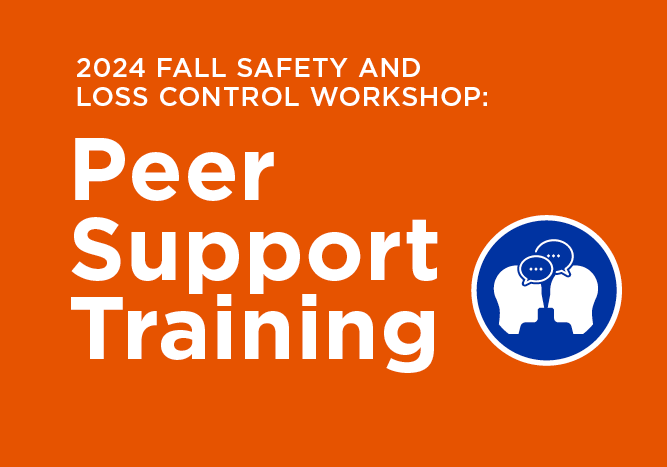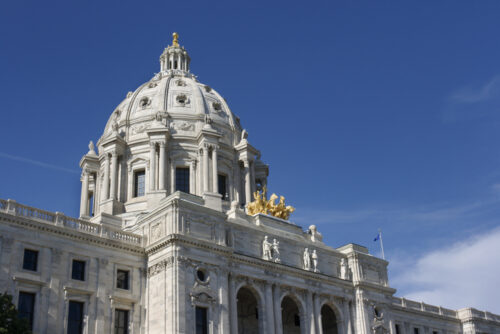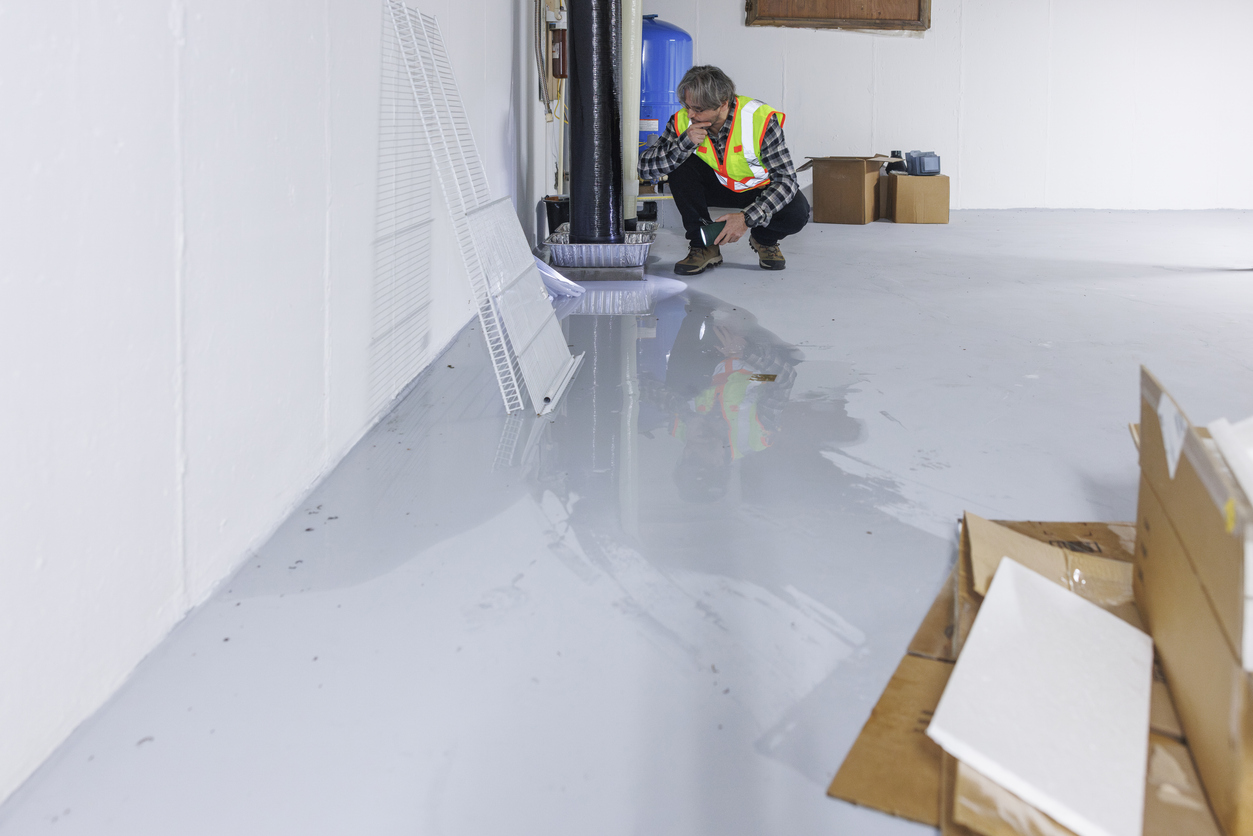The content and layout of FAQs on this web page were entirely revised on July 23, 2021.
(Updated June 14, 2022)
Get answers to FAQs regarding general council and city operational issues:
Meetings & council business
Q1. Can our city meet remotely under 13D.021 if the community transmission of COVID-19 is reportedly high in Minnesota, even though the state is not in a state of emergency? (Updated May 30, 2022)
Q2. Do the council members or residents need to wear masks during our meetings at city hall? (Updated Dec. 2, 2021)
Q3. Can our city hold public hearings remotely if the public body is meeting remotely under 13D.021, even though the state is not in a state of emergency? (Added Dec. 2, 2021)
Q4. Did the Legislature adopt a medical exception to the Open Meeting Law? How does that work? (Added Dec. 2, 2021)
Q5. Does the city have the option of meeting in person and requiring remote attendance by the public? (Added Dec. 2, 2021)
Q6. If the city council begins to meet remotely under 13D.021, is the city required to allow remote public comment? (Added Dec. 2, 2021)
Q7. If it is determined it is not practical nor prudent to meet in person due to a health pandemic, does the city need to provide free remote monitoring for the public? (Added Dec. 2, 2021)
Declaring an emergency
Q9. How does a city rescind an emergency declaration?
Managing normal city business
Q10. Do critical-sector businesses need to create COVID-19 Preparedness Plans?
Q12. Our first responders are almost out of N95 masks. Where can we get more?
Q13. Are there any COVID-19 materials available in foreign languages?
Q14. Should the city require participants in recreation activities to sign a waiver and release of liability containing COVID-19 language? (Updated May 30, 2022)
Managing employment issues
Q17. What is the HR policy to address an employee that may have been exposed to COVID-19? (Updated June 14, 2022)
Q18. Are workers who contract or are exposed to COVID-19 eligible for workers’ compensation? (Updated June 14, 2022)
Meetings & council business
Q1. Can our city meet remotely under 13D.021 if the community transmission of COVID-19 is reportedly high in Minnesota, even though the state is not in a state of emergency?
A1. Maybe. The threshold question in determining whether the public body may meet remotely under 13D.021 is whether it is not practical or prudent under a health pandemic. If the presiding officer, chief legal counsel, or chief administrative officer for the affected governing body determines that an in-person meeting or a meeting conducted under section 13D.02 is not practical or prudent because of a health pandemic, and the other requirements of 13D.021 are met, meetings may be conducted by telephone or interactive technology. Your city attorney is best equipped to advise the city as to whether their specific city has met statutory requirements. At least a quorum of the city council must be attending remotely for this exception to apply (see advisory opinion 21-003 and Data Practices Office webinar, Data Practices Potpourri, December 2021).
Learn more about City Options for Meeting Remotely
Q2. Do the council members or residents need to wear masks during our meetings at city hall?
A2. Cities may still require masks be worn in public places through ordinance or resolution, depending on the city’s specific structure. Gov. Walz rescinded Executive Order 20-81, ending the statewide mask mandate on May 14, 2021.
Q3. Can our city hold public hearings remotely if the public body is meeting remotely under 13D.021, even though the state is not in a state of emergency?
A3. If your city has determined that in-person meetings are not practical or prudent because of the health pandemic, you would likely have your public hearings that way, too. There is not a specific statute that addresses this. Because of the nature of public hearings, it will be important to work with your city attorney in determining ways that the public can still provide input during the meeting because not everyone has access to online meetings. Accepting written testimony, allowing the public to enter city hall and testify using city equipment, or allowing someone to call into the meeting may be options to consider.
Q4. Did the Legislature adopt a medical exception to the Open Meeting Law? How does that work?
A4. The medical exception allowance is only available when a state of emergency has been declared by the governor, and can be used up to 60 days after the state of emergency has been lifted. In combination with the already existing military exception, the medical exception is limited to three times in a calendar year. Information on the medical exception is available in the League information memo, Meetings of City Councils.
Q5. Does the city have the option of meeting in person and requiring remote attendance by the public?
A5. Not likely. The commissioner of Administration issued an opinion stating that a public body did not comply with the Open Meeting Law when a quorum of the public body held an in-person meeting limiting the public to remote attendance. If the city council meets in person, the public must have the option of also attending in person.
Q6. If the city council begins to meet remotely under 13D.021, is the city required to allow remote public comment?
A6. Maybe. Minnesota Statutes, section 13D.021, subdivision 5 now requires a public body to offer a public comment period remotely if “the public body’s practice is to offer a public comment period at in-person meetings.”
Q7. If it is determined it is not practical nor prudent to meet in person due to a health pandemic, does the city need to provide free remote monitoring for the public?
A7. Yes. During the 2021 legislative session, Minnesota Statutes, section 13D.021, subdivision 3 was updated requiring city councils to provide monitoring from a remote location if the public body is conducting a meeting through telephone or interactive technology.
Declaring an emergency
Q8. Can the mayor declare a public health emergency? Or does that have to come from the governor or public health director?
A8. Maybe. The city attorney is best situated to assist the city in drafting language for declaring a public health emergency under this scenario.
The mayor is responsible for declaring a local emergency. This declaration allows the city to use the parts of its disaster plan that are appropriate to the situation. The declaration may also authorize aid and assistance under those plans. If the mayor does declare a local emergency, it must be publicized and published. A local emergency lasting longer than three days requires the consent of the council. Because the emergency declaration is local, the emergency management functions are limited to the territorial boundaries of your city, unless other law becomes applicable. Examples of other laws include existing mutual aid agreements or cooperation required if the governor were to declare a state of emergency. Minnesota Statutes 12.29 and 12.25 address local emergencies.
Q9. How does a city rescind an emergency declaration?
A9. The city can pass a resolution rescinding the local emergency. Your city attorney is best equipped to advise the city in making changes to create a resolution meeting the city’s specific needs. Some cities have developed emergency declarations with an automatic termination.
Managing normal city business
Q10. Do critical-sector businesses need to create COVID-19 Preparedness Plans?
A10. No. Beginning July 1, businesses and places of public accommodation are no longer required to have and implement a written COVID-19 Preparedness Plan.
Q11. Is there any guidance available for first responders, building inspectors, etc. on the use of masks when entering homes or other buildings where folks might be ill?
A11. See guidance for first responders and law enforcement from the CDC
Q12. Our first responders are almost out of N95 masks. Where can we get more?
A12. The Minnesota Department of Health encourages cities in this circumstance to reach out to your Regional Heath Care Preparedness Coordinator.
See a list of Regional Health Care Preparedness Coordinators and their contact information
Q13. Are there any COVID-19 materials available in foreign languages?
A13. Yes! The MDH has a variety of COVID-19 informational materials in Spanish, Hmong, Russian, and many other languages.
Get MDH COVID materials in different languages
Q14. Should the city require participants in recreation activities to sign a waiver and release of liability containing COVID-19 Language?
A14. The decision to use waivers is a policy question for each city. Some cities may take the approach that if the city’s negligence causes an injury (and the city is not immune from liability), the city should be held responsible. In that case, a waiver would not be appropriate. Other cities may take the position that the city should do everything possible to protect the city from liability, including the use of waivers. LMCIT does not have a formal position to encourage or discourage the use of waivers.
Most waivers are likely broad enough to protect the city from COVID-19 claims. However, in light of the current coronavirus pandemic, it would be a good idea to include specific COVID-19 language. Such language should include waiving claims related to COVID-19 as well as assuming the risk of exposure to COVID-19.
The League has drafted a sample park and recreation waiver with COVID-19 language. The city should consult with its attorney for guidance related to specific situations.
Q15. Are masks required to be worn indoors now? Does the city need to provide masks to employees or residents entering their facilities?
A15. On May 14, Gov. Walz rescinded Executive Order 20-81 lifting the statewide mask mandate. Cities may impose their own citywide mask mandate or require individuals to wear masks in public buildings.
Q16. Now that the Peacetime Emergency has ended, are there any restrictions on places of public accommodation?
A16. Indoor and outdoor places of public accommodation may be open. All capacity restrictions, party size limitations, and distancing requirements are lifted.
Q17: What is the HR policy to address an employee that may have been exposed to COVID-19?
A17. Employers have an obligation (under OSHA regulations and OSHA guidance on preventing the spread of COVID-19) to keep their workplaces safe, and the Department of Labor (FAQ #13) states an employer may encourage, or require, employees to telework as an infection-control or prevention strategy, provided the employer is not singling out employees on a basis prohibited by any of the Equal Opportunity Employment laws.
In the absence of an order by a health care provider to self-quarantine, and in the event the position simply is not one that can work remotely, employers should encourage employees who are ill with COVID-19 symptoms or are exposed to ill family members to stay home. See MDH’s updated guidance on if a person is sick or tests positive for COVID-19 and Close Contacts and Quarantine as of Jan. 6, 2022.
A17, Part A: Employee exhibiting COVID-19 like symptoms
If a worker is exhibiting symptoms leading you to believe a positive diagnosis for COVID-19 is likely, you will want to ensure that the following happens:
- The employee goes home promptly, gets tested (and stays away from others while waiting for the test results), and identifies all individuals they were in close proximity to (within 6 feet) for 15 minutes or more through a 24-hour period. Read the MDH guidance on close contact and tracing for COVID-19. To obtain the most up-to-date MDH guidance on COVID-19 protocols for Minnesota, call the Minnesota COVID-19 Hotline at (651) 201-3920.
- The employee will need to stay away from the workplace for at least five days after their symptoms began. The person is to wear a well-fitting mask for 10 days when around others.
- According to MDH, for the employee to return to the office, all of the following must be true:
- It has been at least five days since the person first felt sick. Day zero is the day the individual’s symptoms began. Day one is the first full day after the employee’s symptoms started.
- The person has had no fever (thus, the person’s temperature is 100.4 degrees Fahrenheit or lower) for at least 24 hours, without using medicine that lowers fevers.
- The person is feeling better such that their cough, shortness of breath, or other symptoms are better.
- According to MDH, for the employee to return to the office, all of the following must be true:
- If the employee does not have symptoms, regardless of vaccination status, the employee will need to stay away from the workplace for five days after the employee tested positive. Day zero is the day the person was tested. The person is to wear a well-fitting mask for 10 days when around others. A person without symptoms wears a mask for 10 days starting on the day they were tested. According to MDH, if a person developed symptoms during this time, they must start over. Day zero is the day the person’s symptoms began.
- Per MDH, those who cannot wear a well-fitting mask for the prescribed time period should remain out of the workplace for at least 10 full days. The 10 days start the day after the individual developed symptoms. If a person does not have symptoms, the 10 days start the day after the individual was tested, with the actual day the person began with symptoms or the day they were tested as day zero.
In the event a worker calls in to the city to notify the city he or she tested positive for COVID-19, a city will also want to work through the above analysis to determine whether the employee has been working in close proximity with other city workers recently. While the city will want to consult with their city attorney and call the Minnesota COVID-19 Hotline at (651) 201-3920 for the most current guidance, it is our understanding those close proximity workers will then be sent home by the city in an effort to stop the spread of infection in the workplace.
Cities will want to keep in mind, in accordance with the Minnesota Government Data Practices Act and Americans with Disabilities Act, the city cannot identify the infected worker’s name (unless the infected worker voluntarily agrees to sign a waiver for the city to share his or her diagnosis), and the city must safeguard any associated medical documentation the city possesses as part of this process to ensure others cannot access the protected information. In the EEOC’s Guidance on COVID-19 and the Americans with Disabilities Act (ADA), question B.5 notes that using a generic descriptor, such as telling employees that “someone at this location” or “someone on the fourth floor” has COVID-19, provides notice and does not violate the ADA’s prohibition of disclosure of confidential medical information. The EEOC adds, for small employers, co-workers might be able to figure out who the employee is, but employers in that situation are still prohibited from confirming or revealing the employee’s identity.
A17, Part B, Quarantine guidance if a person is exposed to someone with COVID-19
MDH updated its guidance on isolation and quarantine on Jan. 12, 2022.
A person with all recommended doses of COVID-19 or who has had COVID-19 in the past three months:
If an employee has completed all recommended doses of COVID-19 vaccine when eligible, including a booster or additional doses (refer to CDC link for a table outlining when a person is considered as up to date with their COVID-19 vaccines) or had COVID-19 in the past three months, they do not need to quarantine. However, they must wear a well-fitting mask for 10 days when around others. The 10 days begin from the day after the individual’s last close contact with someone with COVID-19. The actual day of close contact is counted as day zero. MDH also recommends the person gets tested at least five days after close contact, and if the employee tests positive, they will begin counting again from day zero and follow MDH Isolation guidelines. The employee will still want to watch for symptoms for 10 days after close contact. If symptoms develop, the employee will need to stay out of the workplace and isolate and test immediately for COVID-19. The isolation counting time frame will begin again from day zero (day one is the first full day after the employee’s symptoms start).
An unvaccinated employee or an employee who is not up to date with COVID-19 vaccination, will need to quarantine for at least five full days:
Employees who are unvaccinated for COVID-19 nor up to date on COVID-19 vaccinations (refer to CDC link for a table outlining when a person is considered as up to date with their COVID-19 vaccines) must quarantine for at least five days. The employee will remain out of the workplace/stay at home for at least five full days after their last close contact with someone with COVID-19. The last day of close contact with someone with COVID-19 is considered day zero, with day one beginning the day after the employee’s last close contact. This COVID-19 exposed employee will need to wear a well-fitting mask for 10 days and should test on day five, if possible. If the employee tests positive, the count will begin again from day zero and the employee is to follow MDH Isolation guidelines. If the employee tests negative, then (1) the employee must complete the minimum five days in quarantine, and (2) wear a well-fitting mask around others.
A17, Part C, OSHA Logging for COVID-19 in the workplace:
OSHA issued guidance regarding how to investigate and record COVID-19 cases among your workforce. Minnesota OSHA (MNOSHA) Compliance follows federal OSHA record-keeping guidance, which is used across the country and needs to be consistent for national data comparison, with the exception that in Minnesota, low-hazard industries are also required to record injuries and illnesses.
Read OSHA’s Revised Enforcement Guidance for Recording Cases of COVID-19.
MNOSHA Compliance will enforce the record-keeping requirements of 29 CFR Part 1904 for all employers with employee COVID-19 illnesses. Recording a COVID-19 illness does not, of itself, mean the employer has violated any OSHA standard. And, pursuant to existing regulations, employers with 10 or fewer employees have no recording obligations; they need only report work-related COVID-19 illnesses that result in a fatality and report any employee’s in-patient hospitalization.
OSHA record-keeping requirements now mandate that COVID-19 is a recordable illness, and employers should record cases in their OSHA 300 log if all of the following conditions are fulfilled:
- The case is a confirmed diagnosis of COVID-19 as defined by the CDC.
- The case is “work-related,” which in OSHA regulations means that an event or exposure in the work environment either caused or contributed to the resulting condition or significantly aggravated a pre-existing injury or illness.
- The case involves one or more of the general recording criteria specified by OSHA regulations, which are cases that involve one or more of the following: death, days away from work, restricted work, transfer to another job, medical treatment beyond first aid, loss of consciousness, or a significant injury or illness diagnosed by a physician or other licensed health care professional.
For additional assistance regarding OSHA reporting, please contact your League of Minnesota Cities Insurance Trust loss control representative.
Q18. Are workers who contract or are exposed to COVID-19 eligible for workers’ compensation?
A18. There is no coverage for exposure to a disease under Minnesota’s workers’ compensation law, but individuals may be eligible for workers’ compensation benefits if they contract COVID-19. There’s also a new state law for injuries occurring on or after April 8, 2020 through Dec. 31, 2021, or Feb. 4, 2022, through Jan. 13, 2023, that provides a presumption for COVID-19 workers’ compensation claims, which applies to employees and volunteers working in certain occupations.

